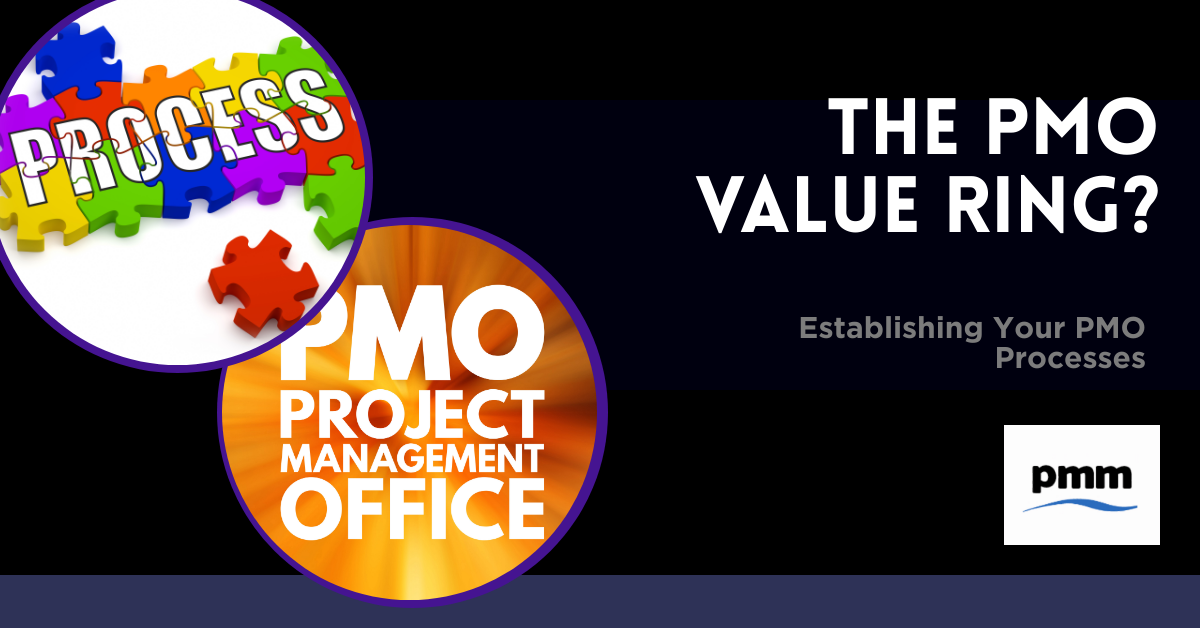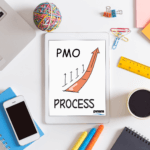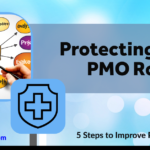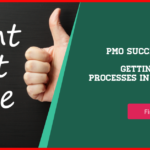Being able to demonstrate the value of your project management office (PMO) will ensure it survives and thrives. Using the PMO Value Ring can be a helpful process to help show the value your office adds, and the third step is establishing your PMO processes.
We’ve already looked at how and why to define your PMO services and choosing a balanced mix of services. Once you know where your PMO will focus on adding value, you need to know the way your projects work in detail.
To guide you through step three of the PMO value ring, we’re going to explore:
- How you go about establishing project processes
- The outputs of the process
- Why this is a vital step to demonstrate PMO value
How do I establish my PMO processes?
Establishing your PMO processes means you will know exactly what happens in your PMO’s projects. You will need to understand the following for each project, which will allow you to track and improve projects:
- Inputs
- Outputs
- Responsibilities
It would be best if you worked with project managers and project staff to understand exactly what goes into each project. Following a project through from planning to completion will help you see what happens in terms of processes.
This can be time-consuming, especially if the projects you work with have a long run time. If that’s the case, a good place to start is to look at a completed project from end-to-end and see what documentation is produced and assess any existing process maps.
You can work back and interview project workers to get more information about activities that may not be codified but are part of the project process.
There are also project process best practices that you can bring to the table when establishing PMO processes. However, it’s important to acknowledge that every organisation is different, and you should tailor the processes you lay down to how your business operates.
Once you’ve understood what your projects do and laid out the processes you want to introduce, you’ll be able to define service level agreements (SLAs) for clients and stakeholders. You will know what your project teams will do every time and what they are capable of.
When you have established your PMO processes, you will have a series of process maps. This will feed into assessing the value that comes out of your office.
Why is it important to establish your PMO processes?
When you have a set of established processes, you have benchmarks to refer to for the projects you manage. This means your projects will have clear goals, and you will be able to set KPIs around deadlines and compliance.
You will also have a fuller understanding of the processes your projects follow. This will help you support your projects and see where you can help improve processes in the long run.
The deeper process knowledge will help manage stakeholder and client relationships. There will be solid data about how long each process should take, and this allows for concrete SLAs for your project deliverables.
Establishing PMO processes in your Value Ring
As you work to demonstrate the value of your PMO, establishing your PMO processes will mean you know what is being done and what can be improved. You will have data points to track progress against.
You will have a foundation to build improved processes and can show the c-suite the change in performance over time.
Once you know what your processes are, the next stage in the PMO Value Ring is to set goals and KPIs, which is the topic of our next blog post.






